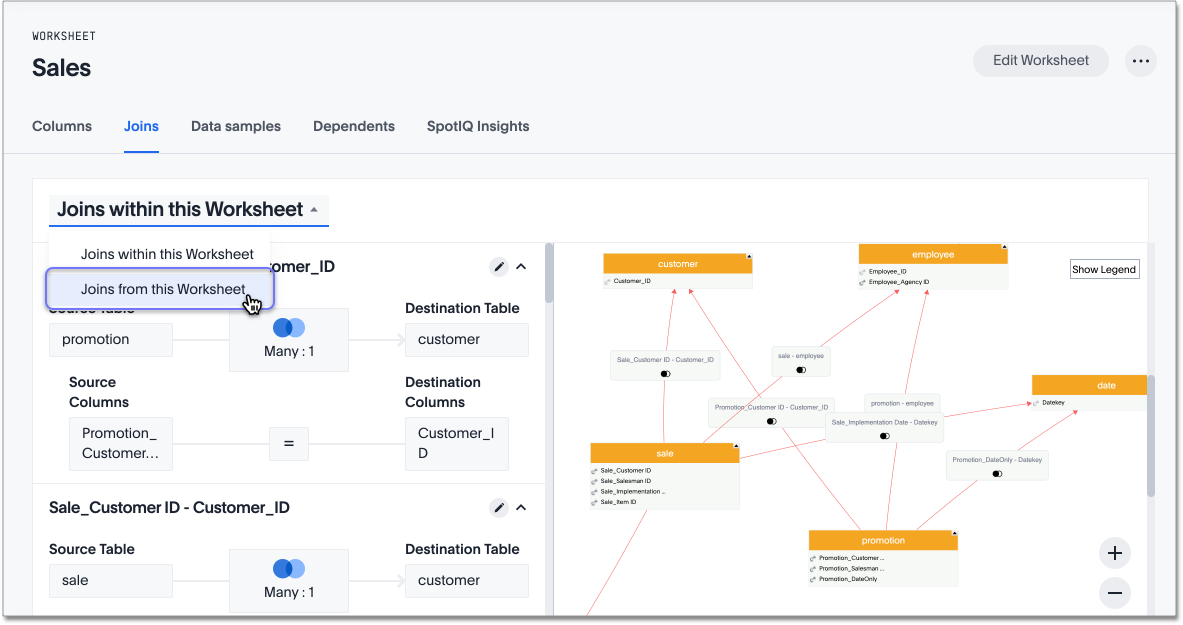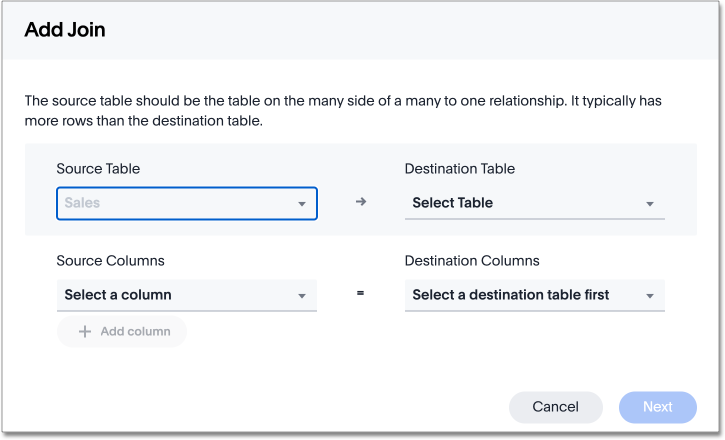Join a worksheet to another data source
Learn how to define joins between a Worksheet and a table or View.
Joining a Worksheet to a table or View creates a relationship that allows them to be searched together. Choose a column to join on that both data sources contain (for example, employee ID or product key). This process creates a generic join between the Worksheet and the table or View on the column you specify.
| Defining a generic relationship in the UI rather than using a primary key/ foreign key join through TQL has no impact on performance. However, when creating relationships in the UI, you must ensure that you create it in the right direction: many to one. To create many-to-many joins, use TQL. To create range joins, use TML. |
You can join any data object to another object, with the following 2 restrictions:
-
You can only join a worksheet to a user-uploaded CSV table.
-
You cannot join objects across connections. This means that you cannot join an object that is part of one connection to an object in a different connection.
You must have either the Can administer ThoughtSpot privilege or the Can manage data privilege to create a join relationship. If you’re not an administrator, you also need edit permissions on the table, View, or Worksheet.
When creating a join between the columns in two data sources, the columns being linked must have the same data type, with the same meaning. That is, they must represent the same data.
Creating a join from a Worksheet
To create a join from a worksheet:
-
To find your worksheet, click Data on the top menu, and choose Worksheets.
-
Find your Worksheet through browsing, Search, or selecting the appropriate Tag(s).
-
To select the Worksheet for adding joins, click its name in the list.
-
Click the Joins tab. The list of existing joins within the worksheet appears.

-
To view the joins between this Worksheet and other data sources, click Joins within this worksheet, and choose Joins from this worksheet.
-
To start creating a join, click + Add Join on the upper right side of the screen.

-
In the Add Join dialog, choose the destination table or View for the other end of the join.

-
Choose the matching columns under each table. These columns must use the same data type. [Optional] You can select multiple columns for the same join. To add another pair of matching columns to the join definition, click + Add columns.
-
Specify the join type; see Join types.
-
Specify the join cardinality; see Join cardinality.
-
Click Create join.
-
Repeat these steps to create all joins.
After creating the join, you may change its name and description by clicking the edit icon. If you want to change the data source or column being joined, you must delete the join and create a new one.
Related information



